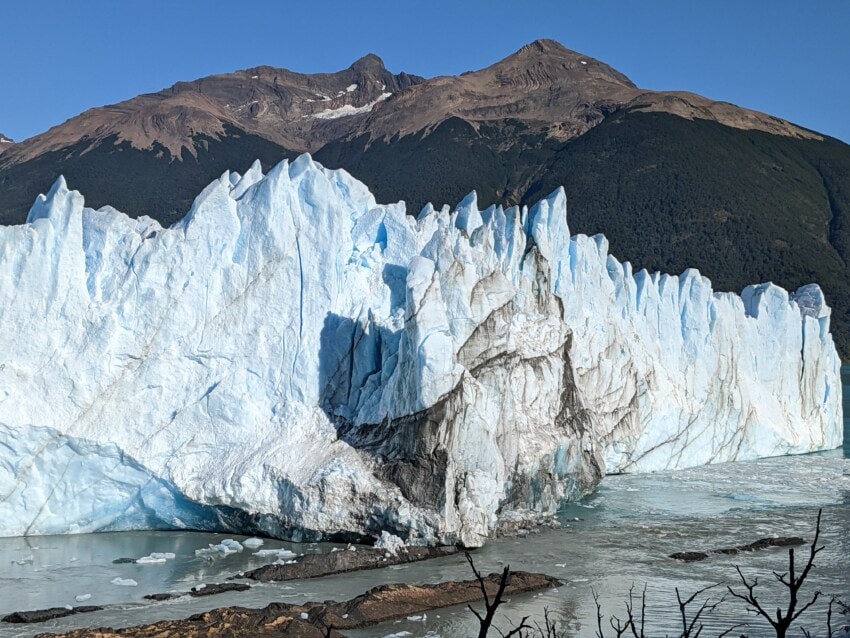Ice climbing appeared relatively recently and, as well as climbing, separated from mountaineering. It has retained the main distinguishing features of its progenitor: extreme, unpredictable terrain on the route and dependence on the weather. Despite the name, the ascents do not occur only on pure ice, because it is rarely found in natural conditions. Usually it is a combination of rocks and ice in the form of frozen waterfalls, streams, icy rocks.
A bit of history
There is an opinion that the homeland of ice climbing is the Alpine mountains. It was here in the 19th century noble gentlemen from England came to rest. They traveled in the mountains, hiring local shepherds to guide them. In the process of such hikes there was a need for special equipment. It is believed that ice climbing began its history when in 1908 the Englishman Oscar Eckenstein has designed the first crampons. They were spikes attached to the shoes. With their help it was possible to hold on even on smooth ice.
In 1924, Fritz Rigel from Germany created a long serrated ice hook. With the help of this device the climbers Armand Charles and Camille Devaso in 1928 climbed the White Wall Aiguille Verte.
In 1930 in Italy Loren Grievel added two forward-facing spikes to the design of the crampons, thereby improving the equipment. With the help of the cats it was now possible to move on surfaces made of ice, close to steep. Another step in the development of the equipment was taken in 1970 by the American Yvon Chouinard. He made the ice axes shorter and gave them a curved shape. As a result there appeared a set of equipment necessary for ice climbing to separate from rock climbing.
In Russia, the new discipline originated in the mountain ranges of the Caucasus. There were competitions between climbers who tried to conquer icy slopes. Sometimes they were joined by rock climbers as well. The climbers gradually lost interest in this activity and returned to their sport. And ice climbing continued its existence, and gradually there appeared athletes who specialize in it.
Types
As the discipline evolved, so did its evolution. Two subspecies of ice climbing were distinguished. The first – overcoming natural terrain: frozen waterfalls, streams, rivers. Unlike rock climbing, ice climbing is a winter sport because it requires a combination of terrain and ice. Such natural objects, in fact, in the availability of man is not so much. And in summer, as a rule, ice climbers were left out.
That is why with the lapse of time another variety appeared – sport, on artificial terrain. There the participants compete on artificial surface, like a climbing wall, to this or that degree covered with ice. And sometimes without ice at all – the so-called dreitooling.
On man-made structures, ice climbers have to climb vertical and even overhanging structures. They are built on purpose, filled with ice. It depends very much on the physical shape of the athlete. The technique itself is not too different from the rock climbing, but requires the skill to work with special equipment. Such competitions are always of extreme nature, because ice, in contrast to the mountainous terrain, always conceals many surprises.
Ice climbing involves competitions on the difficulty and speed. In the first case, you must overcome a long distance, where there are icy vertical ascents, overhanging walls and ceilings. You have only 10-15 minutes to do it. Of equipment allowed only safety helmet. Also widespread today are ice barrels and ceilings – very reliable devices. Barrels of ice are equipped with tracks for competitions. They are attached to the ropes fixed in the ice. If they break, they can easily be replaced.
The athletes wear warm clothes, but their hands get cold, and there are no special gloves for ice climbers. True, athletes have come up with a way to replace them – these are golf gloves. They are thin and do not restrict the mobility of the hands and fingers, while at the same time do not slip. But there is a problem – golfers usually use only one: the right hand is used by right-handers and the left hand is used by left-handers, respectively. An ice climber, on the other hand, needs two. Sports store clerks are probably quite surprised.
The speed contest is more exciting. This is a kind of sprint over the ice wall, located vertically and having 15-20 m in height. Equipment here is two hooks, called ice anchors. These hooks are smooth and sharp, and with their help you can quickly crash into the ice and stay on the wall. In speed tournaments, ice climbers climb the structure faster than a hiker can complete a horizontal section of the same length.
Necessary equipment
It plays a special role if ice climbing takes place on natural terrain. Ice tools have evolved with the discipline itself.
The main tools of ice climbing are, of course, cats and ice axes. Crampons have a slightly different design than those designed for mountain climbing: they are bolted to your shoes, and they are not as easy to remove. At the same time, they have less weight, which, taking into account lightweight boots, makes the ice climber more comfortable when moving.
The ice axe looks like a pirate’s boarding hook. It has two-handed handles with a curved shape and many serrations. The serrations allow securely crashing into ice and rocks (the ice axe’s beak can be changed to another to suit the type of terrain). Two-handed handles provide the ability to hold the tool with both left and right hands as needed, as well as to intercept it from one hand to another. Ice climbers do not use the hand straps (hand loops). It is replaced by a lanyard fastened to the belt, which prevents the ice axe from falling out. If your hands are too busy, they take the tool right in your teeth.
Lately a light tool has been produced for ice climbing. For example, heavy plastic shoes can now be quite easily replaced by lightweight ones called “catboots. As it has already become clear, this is a combination of boots and cats. Such shoes are equipped with a special spur, which helps to overcome some features of the terrain. And in addition, the weight of the athlete in such shoes is much less.
Of course, for travel on the ice need warm and windproof clothes, but lightweight and not constraining movements. Usually, for this purpose ski suits are used.
In addition, the ice climber must be present and other equipment:
– Ice climbing is usually accompanied by breaking off pieces of ice – large, heavy with sharp angles. Therefore, the athlete must always wear a protective helmet.
– Flashlight. After all, in the winter, the daylight hours are limited, and the hike may require an additional source of lighting.
– Safety system and ropes. Allow you to pass difficult routes and increase safety.
– Water supply. The level of fluid in the body must be replenished in time, because with its lack of heat leaves the body much faster.
– Knife. Needed when necessary to cut the rope or remove the damaged end of it.
– Backpack. Allows you to free the hands of an ice climber. It should necessarily be present mountings for crampons and other devices.
Dangers and risks.
Ice climbing – an extreme sport, which means it is inevitably associated with risks to life and health. There is an opinion that the greatest danger – to fall from a height. In fact it is not so: both in mountaineering and in ice climbing well elaborated technology of insurance. And according to statistics such cases are quite rare. But what happens frequently and is even considered an “occupational injury” of an ice climber are bruises from an ice axe. This tool can slip and hit the athlete in the shoulder or, in the worst case, in the face, while pulling it out of the ice. Abrasions from ice splinters, occurring when cutting into the surface, are also very common. It is necessary to additionally protect your hands with gloves, because you can break your knuckles when you get into the ice.
Injuries on man-made structures are not excluded either. Ascents on the speed often are accompanied by the fact that the sharp ice hooks slip out of the surface and cause stab wounds to athletes legs. To protect themselves, ice climbers sometimes use soccer shields. They are not as comfortable, of course, but safer.
In developed countries ice climbing is a commercial sport. That is what attracts athletes to it. Competitive programs in festivals and various winter events have already attracted the attention of many associations. Many experts believe that soon this discipline can enter the Olympic program and be officially recognized by international sports organizations.













